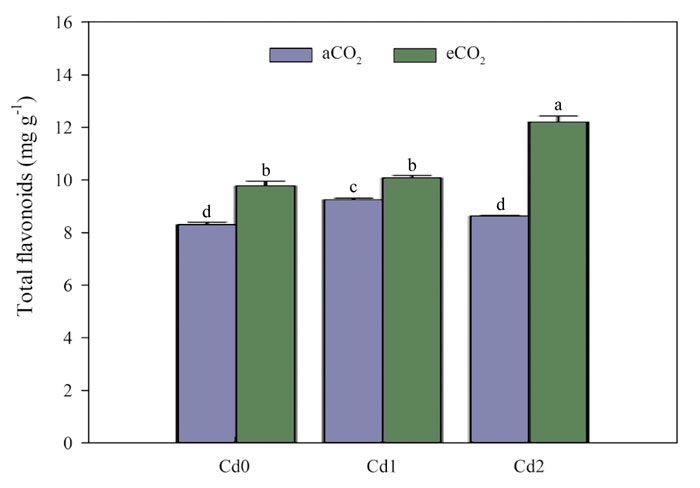| Tweet | Follow @co2science |
Paper Reviewed
Zhang, C., Jia, X., Zhao, Y., Wang, L., Cao, K., Zhang, N., Gao, Y. and Wang, Z. 2021. The combined effects of elevated atmospheric CO2 and cadmium exposure on flavonoids in the leaves of Robina pseudoacacia L. seedlings. Exotoxicology and Environmental Safety 210: 111878, doi.org/10.1016/jecoenv.2020.111878.
In the words of Zhang et al. (2021), flavonoids "play important roles in plant growth, such as flower coloring, signal transduction, antioxidation, ultraviolet protection and allelopathy" and they "are widely found in the roots, stems, leaves and flowers of higher plants." What is more, the accumulation of flavonoids in plants is influenced by several environmental or abiotic factors, including atmospheric CO2 concentration and heavy metal soil toxicity of cadmium. However, Zhang et al. note that "although the individual effects of elevated CO2 and cadmium on flavonoids in plants have been well investigated, the response of flavonoids to the combination of elevated CO2 and cadmium has received little attention." And so it was that this team of eight Chinese researchers set out to change this situation.
As their contribution to the subject the authors exposed black locust (Robinia pseudoacacia) seedlings to a full-factorial design of two CO2 treatments (ambient at 385 ppm and elevated at 750 ppm) and three cadmium (Cd) treatments Cd0, Cd1 and Cd2, representing 2.88 (no added Cd), 3.33, and 7.39 mg Cd per kg of dry weight soil, respectively. The plants were grown in a controlled-environment laboratory in pots under the respective treatments for a total of 135 days.
So how did the different treatments impact flavonoid accumulation in the black locust seedlings?
In the words of the authors and as shown in Figure 1 below, elevated CO2 "significantly stimulated the synthesis of total flavonoids in the leaves of the seedlings," which increase was "positively correlated to the increase in total soluble sugars" and suggests that "elevated CO2 may improve the survivability of plants in an adverse environment by stimulating the synthesis of secondary metabolites." Zhang et al. also found that elevated CO2 increased the accumulation of Cd in the leaves of black locust seedlings, which indicates "elevated CO2 may improve the phytoremediation of Cd-contaminated soils."
Such favorable findings bode well for the future protection and defense system of black locust trees as the air's CO2 content rises, as well as for their use in cleaning up soils contaminated with heavy metals.

Figure 1. The content of total flavonoids in the leaves of black locust (Robinia pseudoacacia) seedlings under different cadmium (Cd) and CO2 treatments. aCO2 and eCO2 represent ambient CO2 and elevated CO2, respectively. Cd0, Cd1, and Cd2 represent 2.88 (the control with no added Cd), 3.33, and 7.39 mg Cd per kg of dry weight soil, respectively. Different lowercase letters indicate significant differences (p < 0.05) between treatments. Results show means. Bars show standard error (n = 3). Adapted from Zhang et al. (2021).




